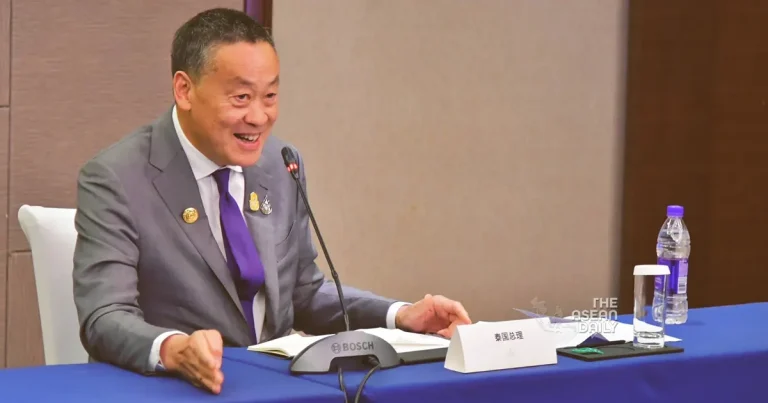19-10-2023 (BANGKOK) Prime Minister Srettha Thavisin revealed that he proposed the idea of establishing a permanent visa-free entry for Chinese tourists during his extensive discussions with Chinese Prime Minister Li Qiang in Beijing.
Mr. Srettha also took the opportunity to brief his Chinese counterpart on the advantages of a proposed landbridge project in southern Thailand, which aligns with the China-backed Belt and Road Initiative.
The discussions on Wednesday also encompassed a potential new bridge over the Mekong River to Laos, aimed at boosting trade between Thailand and China, as well as the simplification of requirements for Thai cow exports to China.
“Yesterday, I felt a strong connection with the Chinese prime minister,” Mr. Srettha stated on Thursday. “He provided me with his personal mobile number for direct communication. This is an encouraging sign. Both countries must rely on each other. We must rely on China, which is a major ally.”
These remarks were made as the prime minister concluded his visit to Beijing to attend the third Belt and Road Forum for International Cooperation.
In an effort to stimulate tourism as part of a broader economic revitalization plan, the Thai government implemented a temporary visa exemption allowing 30-day stays for Chinese and Kazakh nationals. The program, which commenced on September 25, is scheduled to expire on February 29.
Initial responses from Chinese travelers were promising. However, security concerns escalated following the shootings at Siam Paragon on October 3, where a Chinese visitor was among the three fatalities. Authorities have pledged to address these concerns.
China was Thailand’s largest source of international visitors prior to the Covid-19 pandemic, with nearly 11 million arrivals in 2019. Tourism authorities anticipate approximately 5 million Chinese visitors this year.
Mr. Srettha assured his Chinese counterpart of Thailand’s continuous support for the Belt and Road Initiative. For instance, the proposed bridge crossing the Mekong River from Nong Khai to Laos would facilitate the export of goods from Thailand to China via Laos.
He also highlighted the landbridge project, which aims to connect the Gulf of Thailand and the Andaman Sea through the southern provinces of Chumphon and Ranong. This development would further strengthen the Belt and Road Initiative’s potential to enhance international connectivity, aligning with China’s expectations.
The 90-kilometer landbridge would significantly reduce transportation time for cargo between the South China Sea and the Andaman Sea, cutting it by six to nine days compared to the route via the Strait of Malacca, Mr. Srettha explained.
The landbridge project, coupled with the establishment of Chinese factories in Thailand, would position the country as a global logistics hub, he added.
Additionally, Mr. Srettha proposed streamlining the export of cows by conducting necessary checks in Thailand before exporting them to China. Presently, China requires health examinations and vaccinations to be carried out in Laos.
By conducting the checks in Thailand, cows can be exported more conveniently through rail and sea transportation to China, he suggested.




